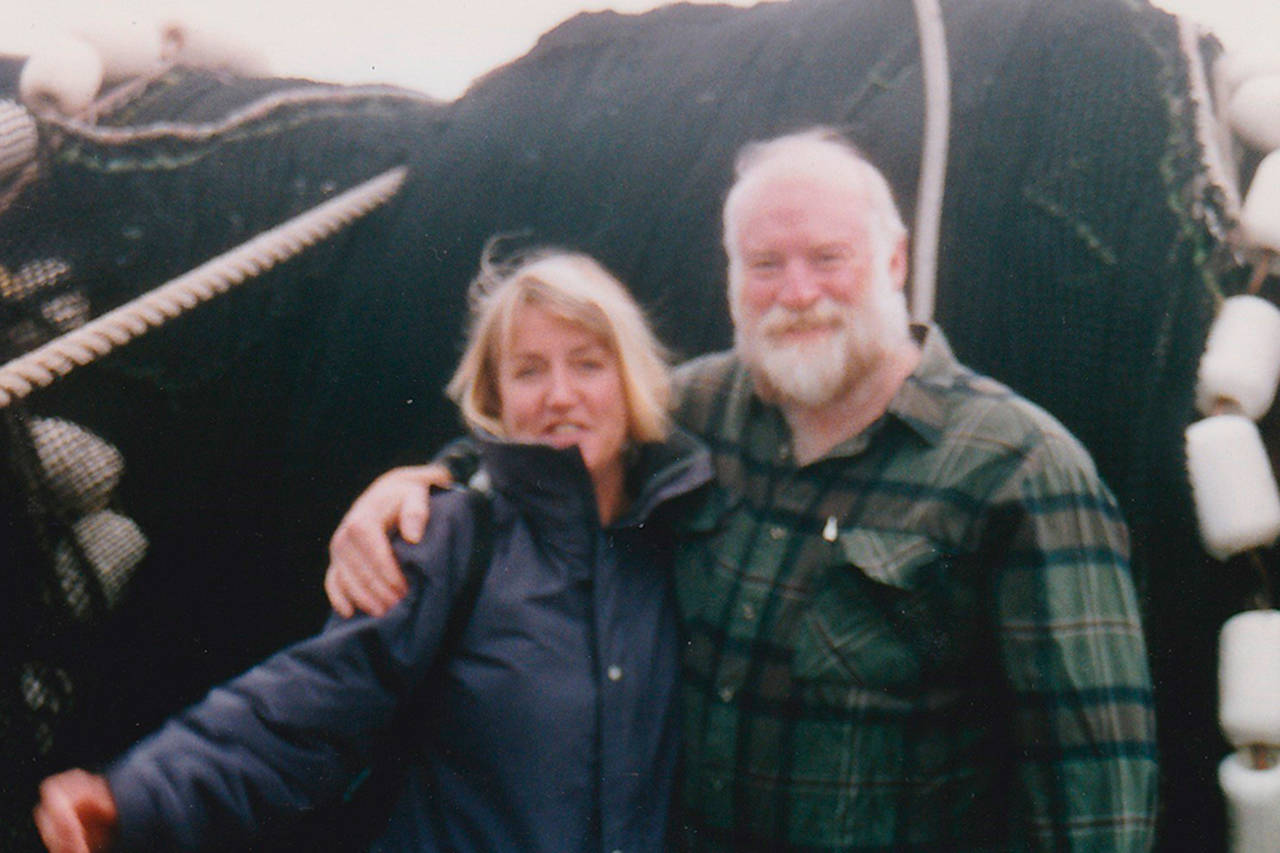By Gretchen Wing
Special to the Island’s Weekly
If Lopez Historical Society morphed into a coffee shop, you’d have Steve and Holly Lovejoy’s home: comfy furniture, shelves of ocean curiosities, walls lined with Lopez ancestors.
The Lovejoy forebears beg for their own Spotlight. There’s Steve’s great-grandpa Norman P. Hodgson, who arrived here in the 1890s. There’s his grandmother Gertrude, who founded the historical society. There’s Samuel Lovejoy, another great-grandpa, an Appalachian with a shady past. Grandpa Elmer Vogt ran the mail boat in the 1920s and worked fish traps all over the islands. But … back to Steve and Holly.
Steve’s parents met on the ferry. They raised three boys near Seattle, spending summers at the grandparents’ house in Richardson. In that environment, Holly said, “You can row by the time you’re 5.” As kids, Steve and his brother made their own wetsuits, “diving all over the place,” with free run of the beach.
Steve began reef-netting in 1965 at age 16, using his great-aunt’s gear and living in a cabin on Iceberg Point: “Probably the best summer of my life.” Holly added, “Yeah, it’s pretty nice when your grandmother brings you food.”
Steve was aiming for college, but Gene Higgins (another relative) recruited him to fish in Alaska. For Steve, “It was a dream come true.” Plus, he made more money that summer than his dad had all year. “I was hooked,” Steve added, pun unacknowledged. He did end up at the University of Washington for a time but kept daydreaming about fishing. Why continue school? His life’s work had found him.
Meanwhile, New Englander Holly Harris, “done with the east coast,” had moved to Alaska in 1972 to fish with her first husband. After their marriage ended, she was deck-handing in Sand Point when she and Steve met in 1986. Both were divorced with children — Steve with three, Holly two.
It was not love at first sight. Actually, said Steve, “I was really pissed off at her.” Holly’s kids’ school year started during a big run of fish, but Holly was the boat’s permit-holder, meaning if she left the boat, they couldn’t fish. The skipper sent Steve to change Holly’s mind about leaving, without knowing her circumstances — hence his ire.
Obviously, they got over it, and in 2001 they got married at Center Church. Steve said, “We had so much in common, growing up in and around boats. … Only the coast was different.”
Steve fished year-round, salmon and herring in summer, king and snow crab in winter. But in 1990, salmon prices crashed. The Lovejoys decided to invest in a boat to handle the South Pacific. They found Papa George in Louisiana and worked for two years to turn the old shrimp boat into a troller, capable of holding 50 tons of frozen tuna.
In 1992, the couple sailed Papa George out of Louisiana and through the Panama Canal — “learning how to bribe the right people.” In the South Pacific, they didn’t see land for three months at a time. But what land they saw! Easter Island: “I’d dreamed of sailing there,” said Holly, and Steve called it “The most magical place I’ve ever been in my life.”
Later, sheltering from a typhoon, they found tiny, isolated Rapa Iti (Little Easter Island). No boat had visited for a year, and “the whole village came out, with bananas and lobster.” Steve taught the locals modern casting, unheard-of to them, then gave them his gear. Once home, the Lovejoys sent more fishing gear to the Easter Islanders.
For four years they followed tuna and salmon, months and months alone at sea, chatting with the fishing community by radio. But when prices dropped in 1996, they switched to squidding in California. Holly also sold fish off a Seattle dock — 25 tons in six weeks, fish by fish. Then she had a new idea: gourmet canned fish: “vanguard of the future. People wanted to interface with the fisherman.” She settled into a valuable niche at Seattle farmers markets.
The couple lived happily in their cabin in Kingston. But in 2005, Steve’s mom Phyllis got sick and asked Holly to move to Lopez to care for her. Holly did so, nursing Phyllis till her death in 2006, then transitioning to care for Steve’s dad, Clark. To keep Clark’s dream of great-grandkids running on the beach as he had, Holly and Steve bought the house. And in 2009, when Clark died at home, they became Lopezians.
The Lovejoys gave up commercial fishing last January and sold their squid seiner. Are they retired now? Steve said, “Yes,” Holly, “No.” Steve still reef-nets with Jack Girard, like back in high school. Holly works the Lopez Farmers Market and involves herself in “too much stuff,” including oyster farming. Norman Hodgson Jr. seeded the whole island with oysters, so harvesting them feels like being a live branch on the family tree. And when the grandkids visit, they get to run on Clark’s childhood beach.



